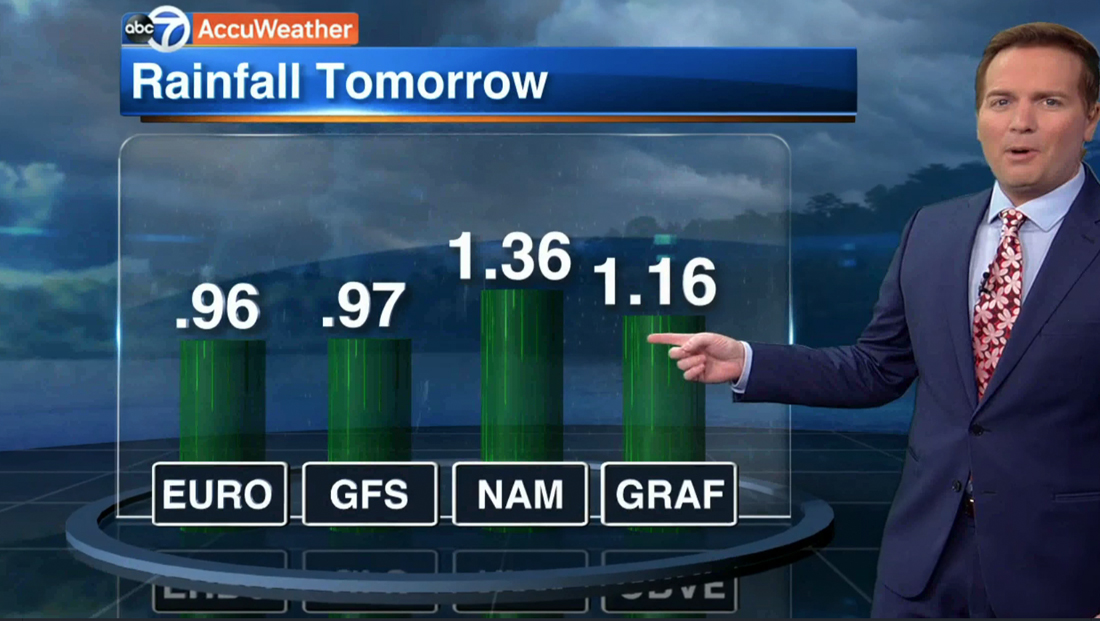How ‘Dogwood’ and ‘Cactus’ will change the GFS model

Subscribe to NCS for the latest news, project case studies and product announcements in broadcast technology, creative design and engineering delivered to your inbox.
There’s a change in the forecast coming.
This change, however, doesn’t just involve precipitation or temperatures. Instead, it’s silicone, metal, plastic and wires.
Meet Dogwood and Cactus. These are two new supercomputers that the National Oceanic and Atmospheric Administration, NOAA, booted up June 28, 2022, with the goal of improving the GFS weather model, also known as the “American Model.”
Later in 2022, the computers will start providing what NOAA says will be significant updates to the GFS model.
The GFS model, along with its “rivals” — the European, NAM and GRAF models, has a role in the lives of Americans every day.
Millions of people see weather forecasts from national and local news sources that rely on these models. In recent years, weather forecasters have even started showing the differences between what each model is predicting.
Most weather systems owned by private companies and broadcasters won’t need to make any updates or changes to receive the new information.
Because the new supercomputers are simply a way to improve the most likely scenario sent out as the “official” GFS model for a particular period, the change is expected to be mostly unnoticeable from a technical standpoint.
As a federal agency, the models NOAA generates are considered to be public record and can be used for commercial purposes, including for-profit TV stations, without any fees. All of the major television weather computer systems are compatible with taking in GFS and other models and incorporating them into on-screen graphics and maps.
Dogwood, incidentally, is named for Manassas, Virginia, where it calls home, while Cactus is named for its Phoenix, Arizona data center locale.
The computers themselves are impressive. They can perform 12 quadrillion operations thanks to a speed of 12.1 petaflops, making them the 49th and 50th fastest supercomputers in the world.
In simple language, the more calculations a computer can perform in short amounts of time make it possible for it to consider the billions of data points involved in attempting to predict atmospheric behavior that, in turn, determines what we know simply as “the weather.”
To generate a forecast model, computers have to run billions of simulations quickly and efficiently and then be able to compare those results to determine the most likely outcomes.
Because weather is, by definition, a natural phenomenon, the models must be able to take the billions of possible ways that the laws of physics could affect the atmosphere into account. Each of these possibilities trigger an exponentially larger number of other possibilities, which all need to be simulated by computers and then compared against the billions of other scenarios to determine the likelihood of it playing out in the real world.
This means that Dogwood and Cactus will give NOAA and the National Weather Service the ability to not only consider more possible potential future weather patterns and hopefully increase the accuracy of the final result, but create more detailed models that could play a key role in predicting smaller weather phenomenon within larger systems, such as thunderstorm cells or tornadoes.
In addition, NOAA is also planning to use the new systems to launch the Hurricane Analysis and Forecast System, hopefully ahead of the 2023 hurricane season. Integration with this new system will require some updates to most weather systems.
Prior to Dogwood and Cactus coming online, NOAA’s GFS supercomputers were in Reston, Virginia and Orlando, Florida.
The new locations are strategically positioned to be farther apart geographically to reduce the possibility that both could be affected by network issues, power outages or, ironically, severe weather.
Subscribe to NCS for the latest news, project case studies and product announcements in broadcast technology, creative design and engineering delivered to your inbox.




tags
National Weather Service, NOAA
categories
Broadcast Industry News, Featured, Weather